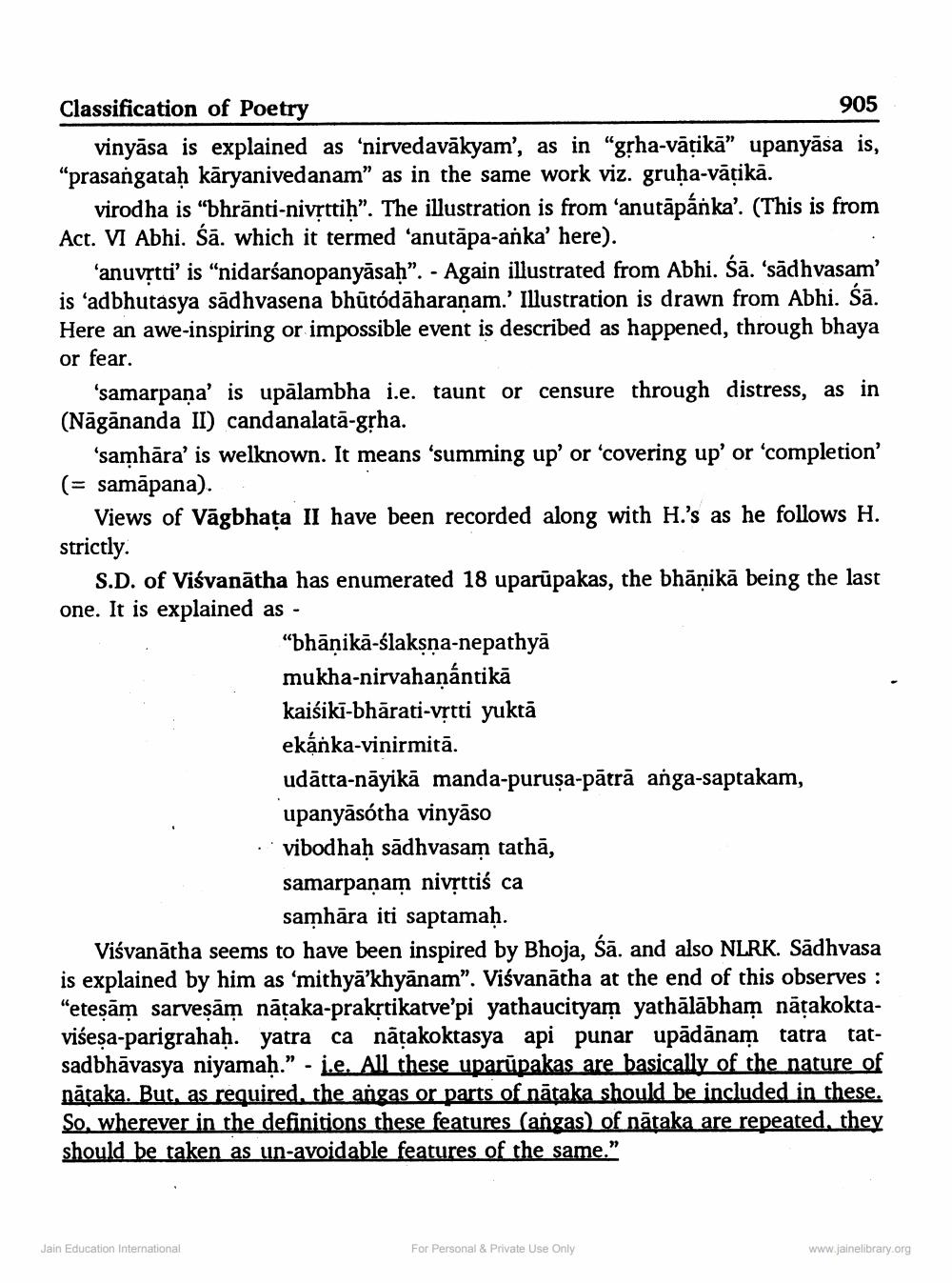________________
Classification of Poetry
905 vinyāsa is explained as ‘nirvedavākyam', as in "gpha-vātikā” upanyāsa is, "prasangataḥ kāryanivedanam” as in the same work viz. gruḥa-vāţikā.
virodha is “bhrānti-nivrttih”. The illustration is from ‘anutāpánka’ (This is from Act. VI Abhi. Sā. which it termed 'anutāpa-anka' here).
'anuvștti' is "nidarśanopanyāsaḥ”. - Again illustrated from Abhi. Śā. 'sādhvasam' is ‘adbhutasya sādhvasena bhūtódāharaṇam.' Illustration is drawn from Abhi. Śā. Here an awe-inspiring or impossible event is described as happened, through bhaya or fear.
'samarpana' is upālambha i.e. taunt or censure through distress, as in (Nāgānanda II) candanalatā-gpha.
'samhāra' is welknown. It means 'summing up' or 'covering up' or 'completion' (= samāpana).
Views of Vāgbhaţa II have been recorded along with H.'s as he follows H. strictly.
S.D. of Viśvanātha has enumerated 18 uparūpakas, the bhāņikā being the last one. It is explained as -
"bhāņikā-ślaksņa-nepathyā mukha-nirvahaņántikā kaiśikī-bhārati-vștti yuktā ekánka-vinirmitā. udātta-nāyikā manda-purusa-pātrā anga-saptakam,
upanyāsotha vinyāso ..vibodhaḥ sādhvasam tathā,
samarpanam nivșttiś ca
samhāra iti saptamaḥ. Viśvanātha seems to have been inspired by Bhoja, śā. and also NLRK. Sadhvasa is explained by him as 'mithya'khyānam". Visvanātha at the end of this observes : "eteșām sarveşām nātaka-prakrtikatve'pi yathaucityam yathālābham nāțakoktavišesa-parigrahah. yatra ca nāțakoktasya api punar upādānam tatra tatsadbhāvasya niyamah." - i.e. All these uparūpakas are basically of the nature of nătaka. But, as required, the angas or parts of nātaka should be included in these. So, wherever in the definitions these features (angas) of nātaka are repeated, they should be taken as un-avoidable features of the same."
Jain Education International
For Personal & Private Use Only
www.jainelibrary.org




